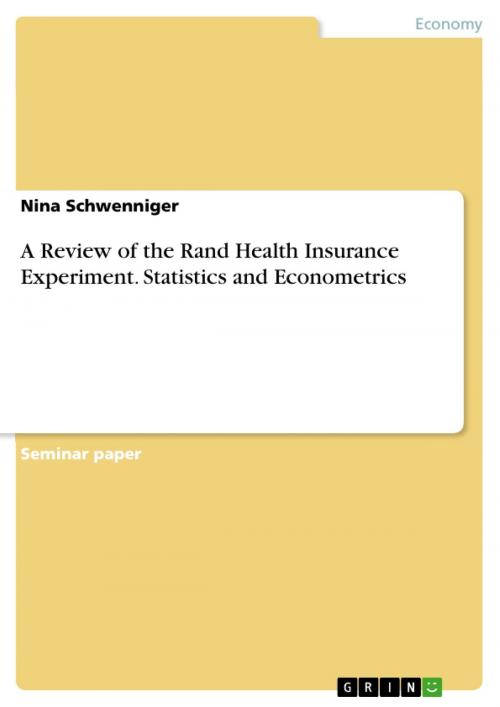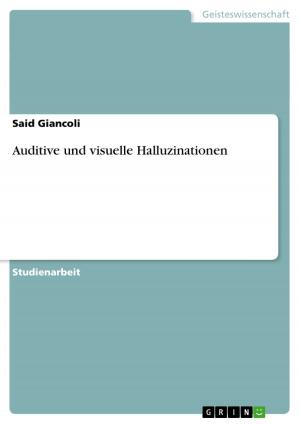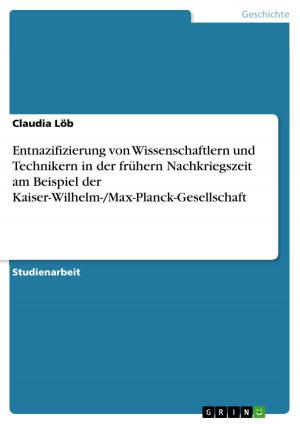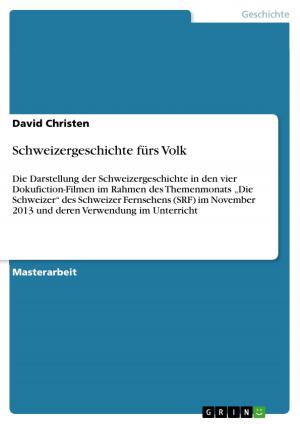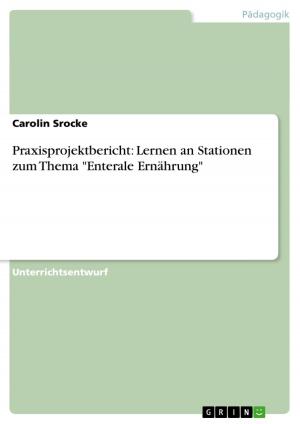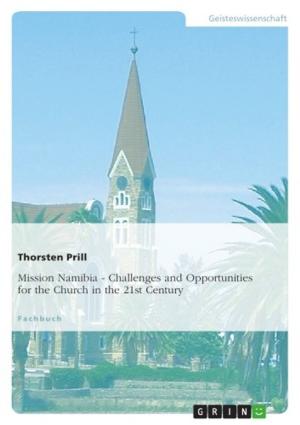A Review of the Rand Health Insurance Experiment. Statistics and Econometrics
Business & Finance, Industries & Professions, Insurance| Author: | Nina Schwenniger | ISBN: | 9783656978855 |
| Publisher: | GRIN Verlag | Publication: | June 12, 2015 |
| Imprint: | GRIN Verlag | Language: | English |
| Author: | Nina Schwenniger |
| ISBN: | 9783656978855 |
| Publisher: | GRIN Verlag |
| Publication: | June 12, 2015 |
| Imprint: | GRIN Verlag |
| Language: | English |
Seminar paper from the year 2015 in the subject Economy - Health Economics, grade: 1,0, University of Paderborn, language: English, abstract: The famous RAND Health Insurance Experiment (RAND HIE) deals with the question how health insurance affects medical spending. The scientific essay The RAND Health Insurance Experiment, Three Decades Later (2013) by Aviva Aron-Dine, Liran Einav, and Amy Finkelstein, extracted from the Journal of Economic Perspective, forms the basis for this seminar paper. All facts regarding the primary experiment are taken from this essay. It features a reexamination of the core findings of the RAND HIE with a state of the art perspective regarding the analysis of randomized experiments and the economics of moral hazard. Between 1974 and 1981, more than 5,800 individuals from about 2,000 households in six different locations across the United States participated in the RAND HIE and thereby received health insurance. The experiment randomly assigned families to health insurance plans with different levels of cost sharing and was representative of families with adults under the age of 62. The plans ranged from full coverage ('free care') to plans with little coverage (5 percent) for the first approximately $4,000 (in 2011 dollars) incurred during a year. The conduct and analysis of randomized experiments as well as the economic analysis of moral hazard in the context of health insurance were relatively novel fields of research back in the years of the RAND investigation. Nevertheless, the RAND results are highly esteemed when predicting the likely impact of health insurance reforms on medical spending or design-ing actual insurance policies. In the course of time, health spending has grown and the consequent pressure on the public sector confers additional significance to the RAND estimates. The RAND HIE was funded by the US Department of Health, Education, and Welfare and cost roughly $295 million (in 2011 dollars). From a cost perspective alone, a replication of such an experiment is highly improbable. In section two, the design of the RAND HIE is presented and complemented by a depiction of the key economic object of interest, namely the impact of health insurance on medical spending. Section three describes the experimental analysis, including the baseline regression. The core variable of interest, the treatment effect, is specified and validated. In section four, the price elasticity is derived and the application discussed. Section five emphasizes the raison d'être for a randomized experiment based on statistical evidence and additional literature.
Seminar paper from the year 2015 in the subject Economy - Health Economics, grade: 1,0, University of Paderborn, language: English, abstract: The famous RAND Health Insurance Experiment (RAND HIE) deals with the question how health insurance affects medical spending. The scientific essay The RAND Health Insurance Experiment, Three Decades Later (2013) by Aviva Aron-Dine, Liran Einav, and Amy Finkelstein, extracted from the Journal of Economic Perspective, forms the basis for this seminar paper. All facts regarding the primary experiment are taken from this essay. It features a reexamination of the core findings of the RAND HIE with a state of the art perspective regarding the analysis of randomized experiments and the economics of moral hazard. Between 1974 and 1981, more than 5,800 individuals from about 2,000 households in six different locations across the United States participated in the RAND HIE and thereby received health insurance. The experiment randomly assigned families to health insurance plans with different levels of cost sharing and was representative of families with adults under the age of 62. The plans ranged from full coverage ('free care') to plans with little coverage (5 percent) for the first approximately $4,000 (in 2011 dollars) incurred during a year. The conduct and analysis of randomized experiments as well as the economic analysis of moral hazard in the context of health insurance were relatively novel fields of research back in the years of the RAND investigation. Nevertheless, the RAND results are highly esteemed when predicting the likely impact of health insurance reforms on medical spending or design-ing actual insurance policies. In the course of time, health spending has grown and the consequent pressure on the public sector confers additional significance to the RAND estimates. The RAND HIE was funded by the US Department of Health, Education, and Welfare and cost roughly $295 million (in 2011 dollars). From a cost perspective alone, a replication of such an experiment is highly improbable. In section two, the design of the RAND HIE is presented and complemented by a depiction of the key economic object of interest, namely the impact of health insurance on medical spending. Section three describes the experimental analysis, including the baseline regression. The core variable of interest, the treatment effect, is specified and validated. In section four, the price elasticity is derived and the application discussed. Section five emphasizes the raison d'être for a randomized experiment based on statistical evidence and additional literature.
